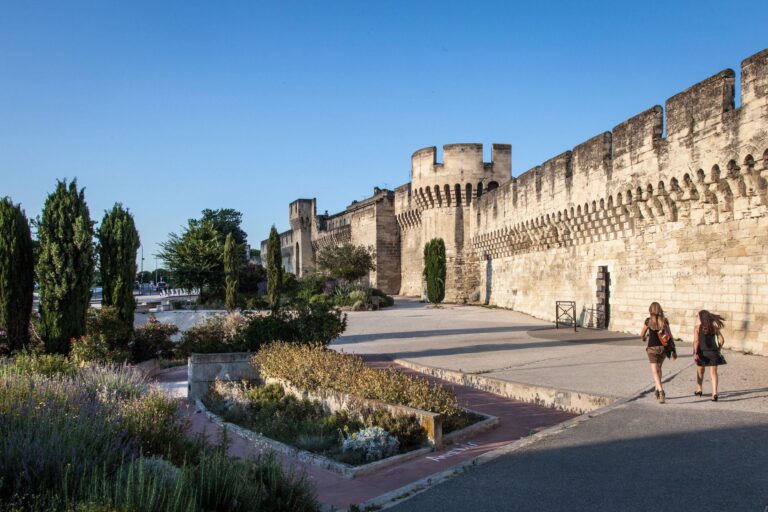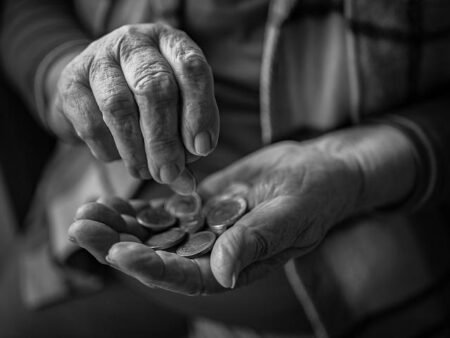In a striking juxtaposition of history and contemporary social issues, the ancient ramparts of Avignon have become a powerful canvas for modern activism. Recently, vibrant murals and bold messages addressing ŌĆśrape cultureŌĆÖ have emerged on the medieval stone walls that have long stood sentinel over this historic French city. This initiative has captured the attention of both locals and visitors alike, prompting discussions around consent, empowerment, and the urgent need to confront ingrained societal norms surrounding sexual violence. As the conversation surrounding these critical issues intensifies globally, Avignon’s historic backdrop serves not only as a reminder of the past but also as a stage for a compelling dialogue about the present and future. In this article, we explore the significance of this artistic movement and its implications for the ongoing fight against sexual violence.
Responses to Rape Culture at Avignon’s Historic Site
In a striking juxtaposition of history and contemporary activism, Avignon’s ancient ramparts have become a canvas for messages decrying rape culture. As visitors stroll along the fortified walls that have stood for centuries, they are confronted with powerful graffiti, bold banners, and thought-provoking street art. This movement is not merely an artistic expression; it serves as a rallying cry for change, aiming to educate and raise awareness about the pervasive issues surrounding sexual violence. Local artists and activists have collaborated to amplify voices that have long been silenced, making the ramparts a focal point for community engagement.
The response from both residents and tourists has been largely supportive, with many participating in the ongoing dialogue about consent and respect. Events such as workshops and discussions are being organized to foster deeper understanding and solidarity against violence. Key themes highlighted include:
- Empowerment: Encouraging survivors to share their stories.
- Awareness: Informing the public about the realities of sexual violence.
- Solidarity: Building a community that advocates for change.
In light of this activism, many are calling for further institutional support. A recent community forum resulted in a proposal to embed educational programs on consent within local schools. The initiative aims to tackle the issue at a grassroots level, equipping future generations with the knowledge and sensitivity needed to combat these societal problems.
The Impact of Graffiti Art in Social Movements
The vibrant murals adorning Avignon’s ancient ramparts serve as a striking counter-narrative to the city’s storied history, transforming a space of heritage into a canvas for contemporary dissent. Graffiti art has emerged as a powerful medium within social movements, encapsulating urgent messages in a visually arresting manner. Notably, the recent installations against ŌĆśrape cultureŌĆÖ highlight how street art can amplify marginalized voices, fostering dialogue among diverse audiences. Key themes expressed through these artworks include:
- Empowerment: Artists often depict strong female figures, symbolizing resilience and agency.
- Awareness: Murals strive to educate the public about the pervasive nature of sexual violence.
- Community: Local artists collaborate, turning their city into a communal space for activism.
Moreover, graffitiŌĆÖs ephemeral nature bolsters its impact; it challenges viewers to confront uncomfortable truths in a way that traditional media may not. The juxtaposition of ancient stonework and modern messaging serves as a reminder that social issues are not confined to the past but are part of ongoing dialogues. In this cultural landscape, the role of graffiti is twofold; it disrupts the norm while fostering a sense of solidarity among individuals fighting for change. The following table provides insight into the evolving relationship between art and activism:
| Aspect | Impact |
|---|---|
| Visibility | Attracts public attention to critical issues. |
| Accessibility | Invites broader participation from all social groups. |
| Legacy | Creates a historical record of contemporary struggles. |
Community Voices: Activism and Awareness in Avignon
In a bold statement against the pervasive issue of rape culture, a group of activists has transformed the ancient ramparts of Avignon into a canvas for modern messages. Through vibrant murals and powerful slogans, they demand a cessation to silence surrounding sexual violence and foster a dialogue about consent and accountability. This initiative has not only captured the attention of locals but has resonated globally, emphasizing that even the most historic sites can serve as platforms for contemporary social movements. The juxtaposition of Avignon’s rich history against urgent modern issues highlights the timeless relevance of advocacy.
The ramparts, often bustling with tourists, now stand as a backdrop for poignant reminders such as:
- “Consent is key”
- “My body, my choice”
- “End the silence”
These messages are designed not just to provoke thought but to inspire collective action within the community. A recent survey conducted among visitors indicated overwhelming support for the movement, with responses detailing the need for increased awareness and education on sexual violence prevention. With these historic walls echoing the cries for change, Avignon stands as a testament to the power of activism integrated with cultural heritage.
Combating Silence: Recommendations for Educational Initiatives
To actively combat the pervasive silence surrounding sexual violence and promote healthy dialogues, educational initiatives must be thoughtfully designed and implemented across various settings. Schools and universities should integrate comprehensive consent education into their curriculums, ensuring that students understand not only the legal definitions of consent but also the emotional and relational dimensions that accompany it. Additionally, workshops focusing on bystander intervention techniques can empower individuals to take action when witnessing potentially harmful situations, fostering a culture of accountability and support.
Community engagement is equally essential. Partnering with local organizations can deepen the impact of educational campaigns through interactive dialogues and community events that challenge harmful stereotypes. Resources such as informative brochures and digital content can serve as tools for raising awareness and stimulating conversation. A possible framework could include:
| Initiative | Description |
|---|---|
| Peer Education Programs | Training students to lead discussions on consent and healthy relationships. |
| Interactive Workshops | Experiential learning to develop skills in intervention and empathy. |
| Community Forums | Open dialogues with survivors and advocates to share experiences and solutions. |
Insights and Conclusions
In conclusion, the striking juxtaposition of ancient stones bearing modern messages in Avignon serves not only as a visual testament to the ongoing fight against rape culture but also as a reminder of the power of public spaces in fostering critical dialogues. The ramparts, steeped in history, have transformed into an unexpected canvas for advocacy, echoing the sentiments of a generation demanding accountability and reform. As the conversation around consent and societal norms continues to evolve, the walls of Avignon stand as a poignant symbol of resistance, urging both reflection and action. This intersection of history and contemporary activism highlights the importance of community engagement in addressing issues that affect us all, ensuring that the call for change resonates far beyond the cityŌĆÖs ancient gates.




